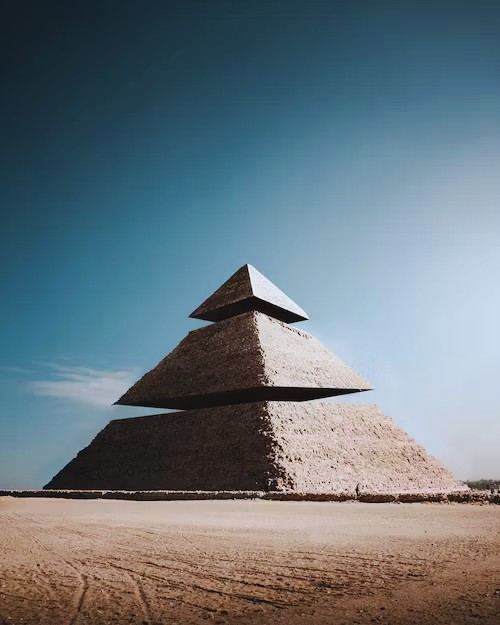The Pyramids of Giza, an iconic symbol of ancient Egypt, have fascinated historians, archaeologists, and travelers for centuries. These towering structures stand as a testament to the advanced architectural and engineering prowess of the ancient Egyptians. Beyond their historical significance, the enigma of the pyramids extends to the very shape that defines them. How many sides do the Pyramids of Giza actually have? Unraveling this mystery takes us on a journey through history, geometry, and the complexities of construction.
Historical Context and Purpose of the Pyramids
To understand the debate surrounding the number of sides of the Pyramids of Giza, we must first delve into their historical context. Constructed during the reigns of various pharaohs of the Old Kingdom, these pyramids served as monumental tombs for the rulers and their belongings. The pyramids were intended to house the pharaoh’s body and belongings for the afterlife, reflecting the ancient Egyptian beliefs in the continuity of life beyond death.
Architectural Geometry and the Pyramids’ Design
The design and geometry of the Pyramids of Giza have captured the attention of experts and enthusiasts alike. While the pyramids appear to have four sides when viewed from a distance, a closer examination reveals a more complex structure. Each pyramid’s sides are not perfectly flat but slightly concave, creating an eight-sided appearance. This effect is most prominent during specific lighting conditions, such as during sunrise or sunset.
Estimating the Number of Sides
The question of how many sides the Pyramids of Giza have can be misleading due to the optical illusion created by the concave sides. Technically, each pyramid has four flat faces and four additional smaller faces formed by the concavities. Traditional depictions and casual observations often lead to the assumption of four sides, but a thorough analysis reveals the presence of eight sides.
The Illusion and Debates
The eight-sided illusion of the pyramids has spurred debates among scholars, researchers, and even tourists. Some argue that the eight-sided effect was intentional, symbolizing the pharaoh’s divine connection to the heavens. Others contend that the eight sides were a result of the construction methods, possibly involving ramps and precise measurements that inadvertently created the optical illusion.
Archaeological Insights and Modern Technology
Advances in technology and archaeological studies have shed light on the construction and design of the pyramids. Laser scanning, detailed measurements, and 3D modeling have helped researchers better understand the intricacies of the pyramids’ geometry. These methods confirm the presence of the eight-sided effect, though they also emphasize the meticulous planning and precision that ancient Egyptian architects employed in their construction.
Conclusion
As we stand in awe of the Pyramids of Giza, contemplating their significance and mysteries, the question of how many sides they have reminds us of the multifaceted nature of history and architecture. While the traditional answer might seem straightforward, the truth is more nuanced. The Pyramids of Giza challenge us to question assumptions, explore the wonders of ancient craftsmanship, and marvel at the artistry that has captivated generations. In the end, it’s not just the number of sides that defines these ancient structures; it’s the enduring legacy they represent.

